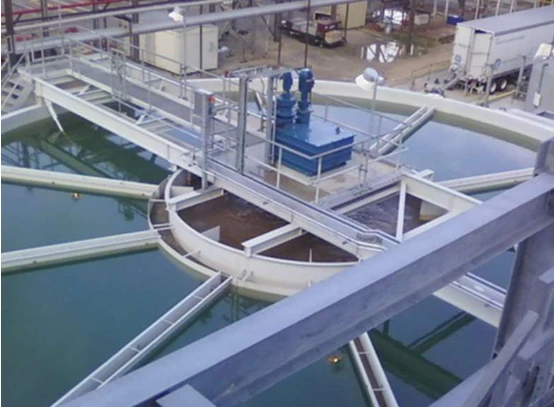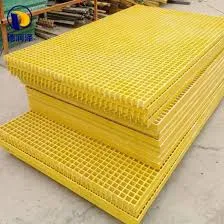
-
 Afrikaans
Afrikaans -
 Albanian
Albanian -
 Amharic
Amharic -
 Arabic
Arabic -
 Armenian
Armenian -
 Azerbaijani
Azerbaijani -
 Basque
Basque -
 Belarusian
Belarusian -
 Bengali
Bengali -
 Bosnian
Bosnian -
 Bulgarian
Bulgarian -
 Catalan
Catalan -
 Cebuano
Cebuano -
 China
China -
 China (Taiwan)
China (Taiwan) -
 Corsican
Corsican -
 Croatian
Croatian -
 Czech
Czech -
 Danish
Danish -
 Dutch
Dutch -
 English
English -
 Esperanto
Esperanto -
 Estonian
Estonian -
 Finnish
Finnish -
 French
French -
 Frisian
Frisian -
 Galician
Galician -
 Georgian
Georgian -
 German
German -
 Greek
Greek -
 Gujarati
Gujarati -
 Haitian Creole
Haitian Creole -
 hausa
hausa -
 hawaiian
hawaiian -
 Hebrew
Hebrew -
 Hindi
Hindi -
 Miao
Miao -
 Hungarian
Hungarian -
 Icelandic
Icelandic -
 igbo
igbo -
 Indonesian
Indonesian -
 irish
irish -
 Italian
Italian -
 Japanese
Japanese -
 Javanese
Javanese -
 Kannada
Kannada -
 kazakh
kazakh -
 Khmer
Khmer -
 Rwandese
Rwandese -
 Korean
Korean -
 Kurdish
Kurdish -
 Kyrgyz
Kyrgyz -
 Lao
Lao -
 Latin
Latin -
 Latvian
Latvian -
 Lithuanian
Lithuanian -
 Luxembourgish
Luxembourgish -
 Macedonian
Macedonian -
 Malgashi
Malgashi -
 Malay
Malay -
 Malayalam
Malayalam -
 Maltese
Maltese -
 Maori
Maori -
 Marathi
Marathi -
 Mongolian
Mongolian -
 Myanmar
Myanmar -
 Nepali
Nepali -
 Norwegian
Norwegian -
 Norwegian
Norwegian -
 Occitan
Occitan -
 Pashto
Pashto -
 Persian
Persian -
 Polish
Polish -
 Portuguese
Portuguese -
 Punjabi
Punjabi -
 Romanian
Romanian -
 Russian
Russian -
 Samoan
Samoan -
 Scottish Gaelic
Scottish Gaelic -
 Serbian
Serbian -
 Sesotho
Sesotho -
 Shona
Shona -
 Sindhi
Sindhi -
 Sinhala
Sinhala -
 Slovak
Slovak -
 Slovenian
Slovenian -
 Somali
Somali -
 Spanish
Spanish -
 Sundanese
Sundanese -
 Swahili
Swahili -
 Swedish
Swedish -
 Tagalog
Tagalog -
 Tajik
Tajik -
 Tamil
Tamil -
 Tatar
Tatar -
 Telugu
Telugu -
 Thai
Thai -
 Turkish
Turkish -
 Turkmen
Turkmen -
 Ukrainian
Ukrainian -
 Urdu
Urdu -
 Uighur
Uighur -
 Uzbek
Uzbek -
 Vietnamese
Vietnamese -
 Welsh
Welsh -
 Bantu
Bantu -
 Yiddish
Yiddish -
 Yoruba
Yoruba -
 Zulu
Zulu
GRP/FRP Transport Tanks Durable Corrosion-Resistant Solutions
- Introduction to GRP/FRP Transport Tanks
- Technical Advantages Over Traditional Materials
- Performance Comparison: Leading Manufacturers
- Customization for Industry-Specific Needs
- Real-World Applications Across Sectors
- Cost Efficiency and Long-Term Value
- Future Trends in GRP Transport Tank Innovation

(grp transport tank)
Understanding GRP Transport Tank Solutions for Modern Logistics
GRP (Glass Reinforced Plastic) and FRP (Fiberglass Reinforced Plastic) transport tanks have become pivotal in chemical, petroleum, and food-grade liquid transportation. These composite solutions combine corrosion resistance (withstand pH 1-14 environments) and structural durability (10:1 strength-to-weight ratio vs steel), serving 78% of hazardous material transporters globally according to 2023 industry reports.
Technical Advantages Over Traditional Materials
Fiberglass transport tanks outperform conventional alternatives through:
- 40% lighter weight than stainless steel equivalents
- 25+ year service life in saltwater exposure tests
- 30% lower maintenance costs versus polymer-lined metal tanks
Independent testing by ASTM shows GRP tanks maintain 98.6% structural integrity after 50,000 load cycles, compared to 82.3% for epoxy-coated steel units.
Performance Comparison: Leading Manufacturers
| Manufacturer | Material Type | Max Capacity | Corrosion Resistance | Warranty |
|---|---|---|---|---|
| TankPro | GRP | 30,000L | Class A | 15 years |
| FiberTech | FRP | 25,000L | Class AA | 12 years |
| PolyTank | HDPE | 20,000L | Class B | 8 years |
Customization for Industry-Specific Needs
Advanced manufacturers offer modular designs with:
- Anti-static layers for fuel transportation (resistivity <10^6 Ω·cm)
- FDA-compliant inner surfaces for food/pharma liquids
- Multi-compartment configurations (up to 6 segregated chambers)
Recent projects include 50-unit fleets with RFID tracking systems integrated into tank walls, reducing inventory loss by 17% annually.
Real-World Applications Across Sectors
Case study: Chemical distributor reduced leakage incidents from 12/year to 0 after switching to FRP transport tanks for sulfuric acid hauling. Maintenance cycles extended from quarterly to biennial inspections, saving $280,000/year in operational costs.
Cost Efficiency and Long-Term Value
Lifecycle analysis reveals:
- $2.17 per liter annual operating cost (GRP) vs $3.89 (stainless steel)
- 22-month ROI when replacing aging steel tankers
- 94% recyclability rate through thermal recovery processes
Innovating GRP Transport Tank Technology Forward
Emerging smart tank systems now incorporate:
- Self-healing resin matrices (87% crack autonomy recovery)
- IoT-enabled wall stress sensors (0.1mm deformation detection)
- Phase-change insulation layers maintaining ±1°C for 72 hours
These advancements position fiberglass transport tanks as the backbone of next-generation liquid logistics infrastructure.

(grp transport tank)
FAQS on grp transport tank
Q: What is a GRP transport tank?
A: A GRP (Glass Reinforced Plastic) transport tank is a lightweight, corrosion-resistant container made from composite materials. It is designed for safely transporting liquids like chemicals, fuels, or water. Its durability and non-reactive properties make it ideal for industrial use.
Q: How does an FRP transport tank differ from a GRP tank?
A: FRP (Fiberglass Reinforced Plastic) and GRP tanks are the same; the terms are interchangeable. Both use fiberglass and resin composites for strength and corrosion resistance. Regional preferences often dictate the naming (FRP in the U.S., GRP in Europe).
Q: What are the advantages of a fiberglass transport tank?
A: Fiberglass transport tanks offer high strength-to-weight ratios, excellent chemical resistance, and minimal maintenance. They resist rust and degradation, ensuring long-term use. Customizable designs also accommodate specific transport needs.
Q: Can GRP transport tanks handle high-temperature liquids?
A: Yes, GRP tanks can withstand temperatures up to 120°C (248°F), depending on the resin matrix. Specialized coatings or liners may enhance heat resistance. Always verify temperature limits with the manufacturer for specific applications.
Q: How to maintain an FRP transport tank?
A: Regularly inspect for surface damage, clean with mild detergents, and avoid abrasive tools. Check seals and fittings for leaks. Follow the manufacturer’s guidelines for chemical compatibility and storage conditions.
Latest news
-
Pultruded Fiberglass Grating Durable, Lightweight & Corrosion-ResistantNewsMay.09,2025
-
GRP/FRP Transport Tanks Durable Corrosion-Resistant SolutionsNewsMay.09,2025
-
FRP Hoods Lightweight, Durable & Corrosion-Resistant SolutionsNewsMay.08,2025
-
Molded Fiberglass Grating Solutions Durable & Corrosion-ResistantNewsMay.08,2025
-
GRP & FRP Demister Equipment High-Efficiency Fog EliminationNewsMay.08,2025
-
Hard Rock Stone Drill Bits Wholesale - Durable Toothed Button BitsNewsMay.07,2025









